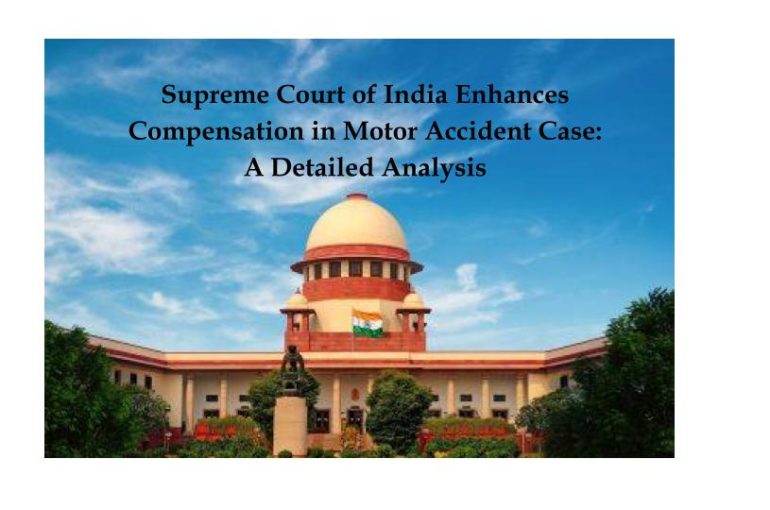Supreme Court of India Enhances Compensation in Motor Accident Case: A Detailed Analysis
Introduction
In a significant ruling, the Supreme Court of India in Prakash Chand Sharma v. Rambabu Saini & Anr. (2025 INSC 180) addressed a crucial issue concerning the assessment of disability and the calculation of compensation in motor accident claims. The case highlights the judicial approach towards victim rehabilitation, particularly for individuals who suffer from severe injuries leading to complete incapacitation. The Court’s verdict ensures that just and fair compensation is provided to victims, emphasizing the importance of expert medical opinions.
Factual Background
The case stemmed from an unfortunate road accident on March 23, 2014, involving the Appellant, Prakash Chand Sharma. While returning to his village Rajpur Badha from Cheel Ki Bawdi on his motorcycle (RJ 02 SC 4860), he was hit by a Maruti Omni (RJ 02 UA 1663), which was being driven recklessly on the wrong side of the road. The Appellant sustained multiple injuries, including severe head trauma, leaving him towards a comatose state.
Following the accident, an FIR (No.81/14) was registered at Police Station Tehla. The Claimant was initially treated at Katta Hospital, Bandikui, and later shifted to Sawai Mansingh Hospital, Jaipur, where he remained in critical condition.
Proceedings Before the Motor Accident Claims Tribunal (MACT)
The MACT (Alwar) framed three primary issues:
- Whether the accident was caused due to the rash and negligent driving of the offending vehicle?
- The extent of compensation payable to the Claimant.
- The liability of the insurance company.
The Tribunal concluded that the accident was indeed caused due to the negligence of the Maruti Omni driver. The Tribunal, however, assessed the disability of the Appellant at 50% and awarded a total compensation of Rs.16,29,465/-.
High Court’s Decision
On appeal, the Rajasthan High Court modified the Tribunal’s Award. While maintaining the 50% disability determination, the High Court introduced an additional 25% component for future prospects, enhancing the compensation to Rs.19,39,418/-. The insurance company’s challenge against liability was dismissed, and it was directed to deposit the enhanced amount with 7% interest.
Supreme Court’s Observations and Judgment
Dissatisfied with the assessment of his disability and the awarded compensation, the Claimant-Appellant approached the Supreme Court. The key contentions raised included:
- Misinterpretation of Medical Evidence: The Appellant argued that the Tribunal and High Court failed to consider the Medical Board’s assessment, which certified 100% disability.
- Inadequate Compensation for Attendant Charges: Given his comatose condition, the Appellant required full-time medical assistance, yet no compensation was awarded under this head.
- Insufficient Compensation for Pain and Suffering: The Tribunal’s Award of Rs.2,00,000/- for mental and physical agony was deemed inadequate.
The Supreme Court found merit in the Appellant’s arguments and emphasized that the Tribunal had erred in disregarding the expert medical opinion, which explicitly recorded a 100% permanent impairment. The Court noted:
- The Appellant had lost speech and intellectual functions.
- He was completely immobile and dependent on others for daily activities.
- The Tribunal was not competent to reassess the disability in contradiction to the expert medical board’s findings.
Accordingly, the Supreme Court recalculated the compensation, ultimately awarding Rs.48,70,000/- with 7% interest per annum.
Conclusion
The Supreme Court’s decision serves as a vital precedent for future cases concerning severe disability due to motor accidents. By correcting the oversight of lower courts, the ruling ensures fair compensation and reinforces the judiciary’s commitment to upholding the rights of accident victims.
Shikha Pandey
Associate
The Indian Lawyer & Allied Services
Please log on to our YouTube channel, The Indian Lawyer Legal Tips, to learn about various aspects of the law. Our latest video, titled; “Legal Framework For Artificial Intelligence” can be viewed at the link below:





































Leave a Reply